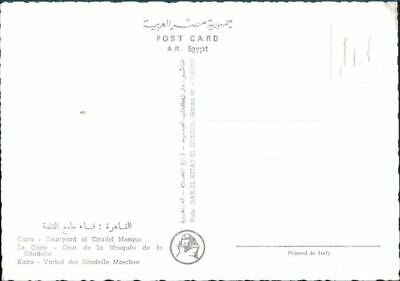-40%
Courtyard of Citadel Mosque, Cairo, Egypt
$ 0.39
- Description
- Size Guide
Description
Courtyard of Citadel Mosque, Cairo, Egyptmade with serrated edges
unsent
The Great Mosque of Muhammad Ali Pasha or Alabaster Mosque is a mosque situated in the Citadel of Cairo in Egypt and was commissioned by Muhammad Ali Pasha between 1830 and 1848.
Situated on the summit of the citadel, this Ottoman mosque, the largest to be built in the first half of the 19th century, is, with its animated silhouette and twin minarets, the most visible mosque in Cairo.
The mosque was built in memory of Tusun Pasha, Muhammad Ali's oldest son, who died in 1816.
This mosque, along with the citadel, is one of the landmarks and tourist attractions of Cairo and is one of the first features to be seen when approaching the city from any direction.
The mosque was built on the site of old Mamluk buildings in Cairo's Citadel between 1830 and 1848, although not completed until the reign of Said Pasha in 1857. The architect was Yusuf Bushnak from Istanbul and its model was the Sultan Ahmed Mosque in that city. The ground on which the mosque was erected was built with debris from the earlier buildings of the Citadel.
Before completion of the mosque, the alabastered panels from the upper walls were taken away and used for the palaces of Abbas I. The stripped walls were clad with wood painted to look like marble. In 1899 the mosque showed signs of cracking and some inadequate repairs were undertaken. But the condition of the mosque became so dangerous that a complete scheme of restoration was ordered by King Fuad in 1931 and was finally completed under King Farouk in 1939.
Muhammad Ali Pasha was buried in a tomb carved from Carrara marble, in the courtyard of the mosque. His body was transferred here from Hosh al-Basha in 1857.
Shipping is {{detail_product_description}}.10 for each additional postcard purchase. NOTE: Highest shipping charge applies first then {{detail_product_description}}.10 for each additional postcard.










